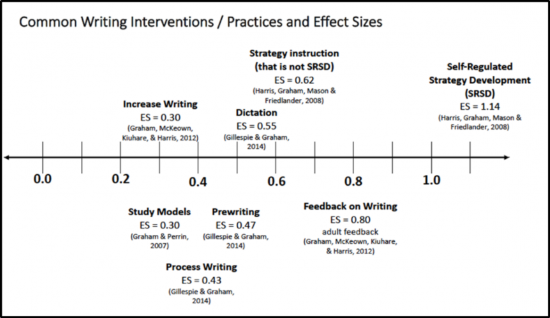





Ask the ‘TASC is a PBIS advice column from the RSE-TASC Specialists
Question: What is a “replacement” behavior? How do I identify an appropriate one?
Response 1:
Sara Fienup & Erin Leskovic,
Behavior Specialists
This is a question that comes up a lot and one reason I think it can be confusing is that the term “replacement behavior” is used in multiple ways. Sometimes, in the context of PBIS, we talk generally about replacement behaviors for problem behaviors that we are seeing in large numbers throughout a school or program. Typically, this is an exercise that we might do when looking to develop a school-wide matrix that identifies expected behaviors for our students. In this context, replacement behaviors are the positively-stated, desired behavior we would like for students to engage in instead of the problem behavior. For example, if in your school a common problem behavior is students running in the halls, your replacement behavior might be “walking in the halls”. Or, if students are often coming to class without the materials they need, the replacement behavior might be “come to class prepared”.
On the other hand, we also talk about replacement behaviors in the context of problem behaviors exhibited by individual students. This is often, but certainly not limited to, when we are looking at students who require individual FBAs and BIPs. In these cases, we look at functionally equivalent replacement behaviors (FERBs). Understanding how to identify FERBs is crucial to responding to problem behaviors effectively. In order to do this, it is essential to first identify the function of the student’s problem behavior. For example, perhaps the student is cursing at the teacher in order to escape from the task (because the teacher’s response is typically to remove the student from the classroom). In this case, a FERB would be asking for a break from the task. Asking for a break results in the same outcome as the problem behavior (escape from the task), but is achieved in a socially-acceptable manner. To identify a FERB, first identify the function of the problem behavior, then determine what behavior the student could engage in that would serve the exact same function via a more appropriate means (hence the term “functionally equivalent”). It’s important to remember that replacement behaviors are always something the student does, not something the adult does. For example, adjusting the task to make it less aversive would be a great adult strategy for our example student, but this would not be a replacement behavior. Here are a few examples of FERBs:
If the function is Access to Attention, some possible replacement behaviors include:
- Raise hand during teacher-directed lessons
- Say peers’ and teachers’ names
- Tap peers and adults on the shoulder
- Say “excuse me” when interrupting
- Solicit feedback (“Look what I did!”, “Come see what I made!”, “Can I show you something?”)
- Asking others to join in other activities (“Come here!”, “Can you sit next to me?”)
If the function is Access to Desired Items or Activities, some possible replacement behaviors include:
- Appropriate requests for desired items and activities (e.g., “I want the ____”, “Can I have a turn?”, “May I have the _____ please?”, etc.)
- Appropriate requests for more time with an activity (e.g., “one more minute”, “Can I have more time please?”, “Can I finish?”, etc.)
- Appropriate requests for more of an item (“Can I have more?”, “I want another one”, etc.).
If the function is Escape from Tasks, Items, or Activities, some possible replacement behaviors include:
- Appropriate rejections (e.g., “no thank you”, “maybe later”, “not right now”, “Can I do something else?”, “I don’t like that”, etc.)
- Request for a break
- Request for assistance
If the function is Access to Sensory Stimulation, some possible replacement behaviors include:
- Request for a sensory break or sensory toy or activity
- Socially acceptable behavior that provides the same or a similar sensation
- Appropriate play and leisure skills
If the function is Escape from Sensory Stimulation or Pain Attenuation, some possible replacement behaviors include:
- Request a break
- Communicate discomfort (e.g., “I don’t feel well”, “It’s too noisy/bright/crowded”, “I’m too hot/cold”, “I’m tired”, etc.)
If you have a question you would like us to answer, please email your question to: dlangley@pnwboces.org with the subject line “Ask the ‘TASC”


 Data-Driven Decision-Making
Data-Driven Decision-Making  Increasing Post-School Success through Interagency Collaboration
Increasing Post-School Success through Interagency Collaboration  How Can We Improve Deeper Learning for Students with Disabilities?
How Can We Improve Deeper Learning for Students with Disabilities?  Positive Classroom Management: Creating an Environment for Learning
Positive Classroom Management: Creating an Environment for Learning  Self-Determination Skills Empower Students of All Ages
Self-Determination Skills Empower Students of All Ages  Fidelity of Implementation: What is it and Why does it Matter?
Fidelity of Implementation: What is it and Why does it Matter?  Rethinking Classroom Assessment
Rethinking Classroom Assessment  A Three-Step Approach to Identifying Developmentally Appropriate Practices
A Three-Step Approach to Identifying Developmentally Appropriate Practices  Transforming Evidence-Based Practices into Usable Innovations: A Case Study with SRSD
Transforming Evidence-Based Practices into Usable Innovations: A Case Study with SRSD